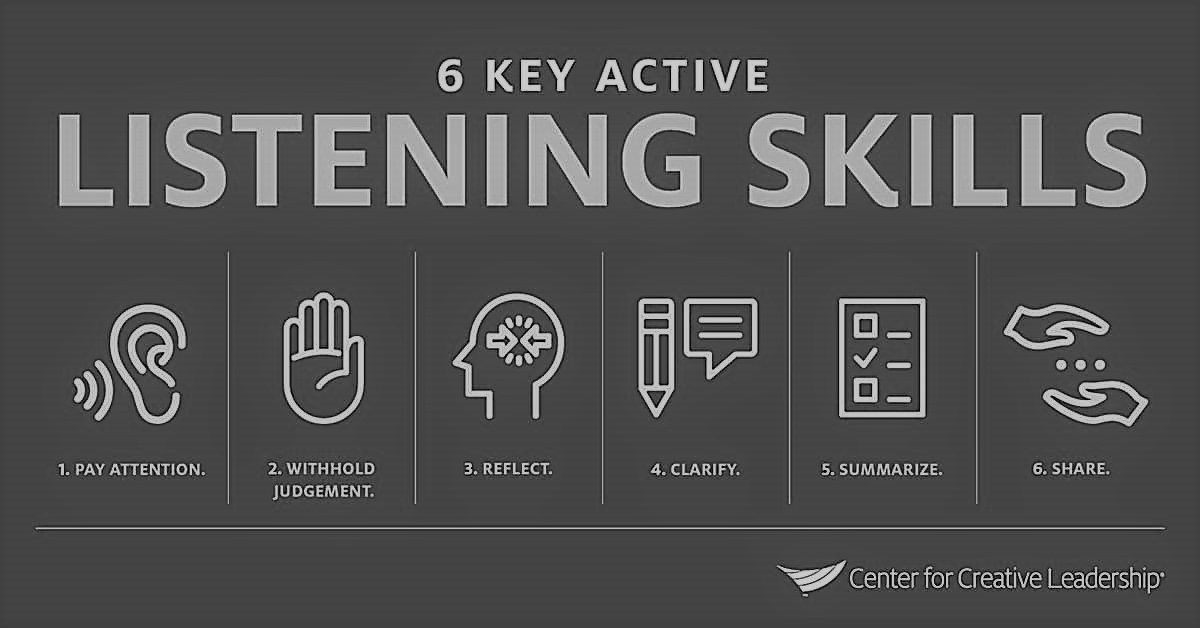
Stories Talk | Presentation Skills and Effective Storytelling
Stories Talk | Presentation Skills and Effective Storytelling
By Mia Kollia
Translated by Alexandros Theodoropoulos
#activelistening #softskills #leader #leadershipskills
Stefanos Loukakos talking about Mark Zuckerberg, with whom he has collaborated, told ImpacTalk: "What has made a great impression on me and I try to follow it, is that he is a man who listens to others a lot." So, if we are interested in evolving both personally and professionally, it is wise to learn to actually listen!
The best executive & leadership coaches insist that there is a big difference between "just listening" and "carefully processing what someone says". Most people tend to talk more than they listen and this can be a real obstacle to personal and professional development.
The solution is to practice active listening. It may seem simple, but it’s a communication technique aimed at the overall understanding of the interlocutor and based on attention and focus. Fortunately, there are simple steps we can take to learn to be more effective listeners.
Remove mobile phones
Especially nowadays, when distractions due to the constant use of digital devices are constant, it is important to be able to create an environment that helps us concentrate. If we are going to have a conversation with someone, we put our mobile phone in silent mode and place it with the screen down. This minimises the possibility of something else catching our attention and our interlocutor makes sure from the beginning that we respect his time and what he says.
Pay attention to body language
The ability to understand non-verbal communication is an essential component of active listening. We can gather a lot of information if we read our interlocutor's body language carefully. The same of course applies to the way others see us.
Experts emphasise the following signs:
Positive
- Stable eye contact
- Relaxed facial muscles
- Friendly smile
- Relaxed hand posture
Negative
- Avoid eye contact
- Raised eyebrow
- Continuous nervous movements
- Crossed arms
In order to visually assure that we are listening to our interlocutor, it helps to tilt the body forward, to nod our head in agreement and to maintain an open posture.

Paraphrase and repetition
One of the best ways to make sure you understand what the other person is saying is to repeat some of what he/she is saying. This is extremely helpful in cases where the other person speaks fast or with an evident emotional influence.
It is important, however, to be clear about why we are repeating what the other person has said. By saying "I just want to make sure that I understand well", we convince the other person that we don’t judge him, but, on the contrary, we are very interested in understanding him.
Reinforcement and questions
Another tool of active listening is positive reinforcement. Using positive words and phrases such as "I understand", "Yes", "Very well" we confirm that we are present in the conversation.
Also, by asking appropriate and relevant questions, we help our interlocutor to feel that we have listened well to what he/she has said and that we want to know more about his/her thoughts and opinions.
Non-stop listening
We cannot listen and speak at the same time. It is necessary to let our interlocutors complete their thoughts and phrases without interrupting them. In this way we help the other speakers feel safe in the conversation and able to take their time to think about how they want to express their thoughts.
We certainly can’t guess what someone wants to say. Interrupting a conversation sends the wrong message that we are not really interested in the ideas, comments or even concerns of our colleagues or employees.
Do not listen in a hurry
If there is a need for a discussion at a time when we are very busy, it is perfectly legitimate to ask for a postponement. We can show how much we appreciate our interlocutor by saying “I want to be fully focused / present in this discussion but at the moment I don’t have the time I need. Is it possible to schedule the discussion at a time that suits both of us?
In conclusion, active listening is a skill that we must constantly practice. It takes time and personal effort to develop the necessary flexibility with our interlocutors but our efforts are definitely worth it, as the result is very positive.
Being an active listener is sure to strengthen our relationships with co-workers, colleagues and employees. We gain their trust and loyalty. We also ensure good and positive communication, which in turn facilitates all interpersonal relationships and increases productivity and harmony in our work environment. And finally, we learn! We always learn and we can learn from everyone something that will make us richer.
Empathy, patience and attention are basic soft skills and first-class tools that, when applied to listening, create a valuable set of communication skills for any workplace.